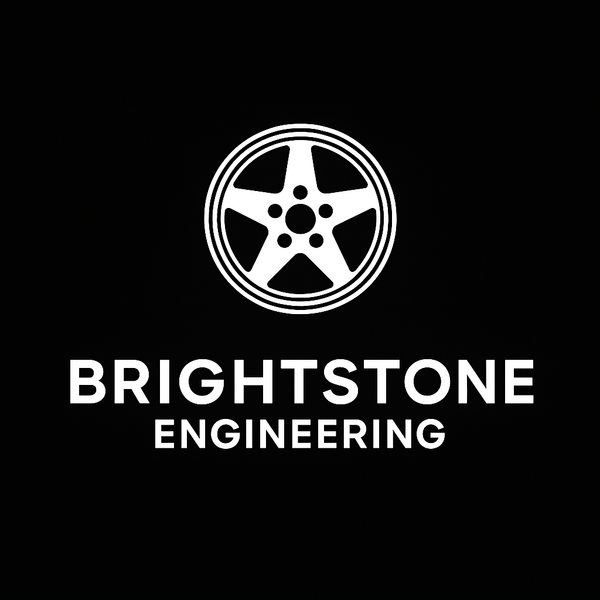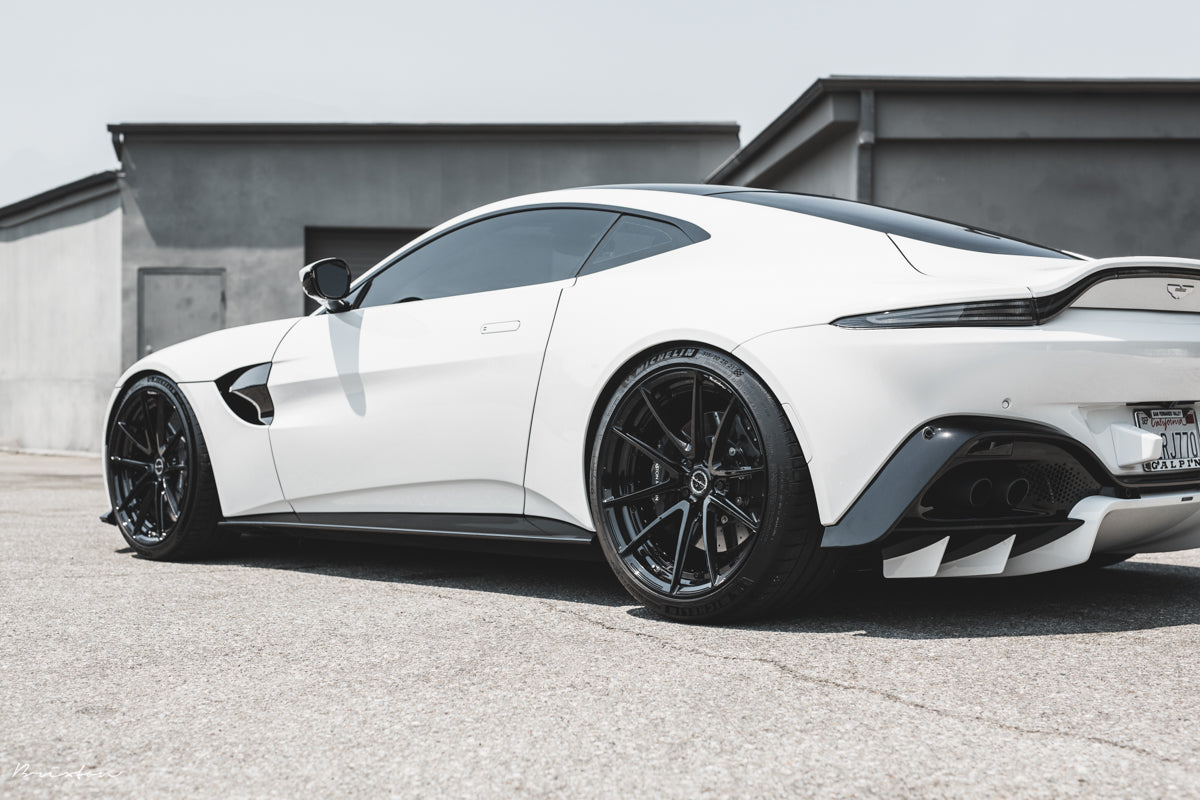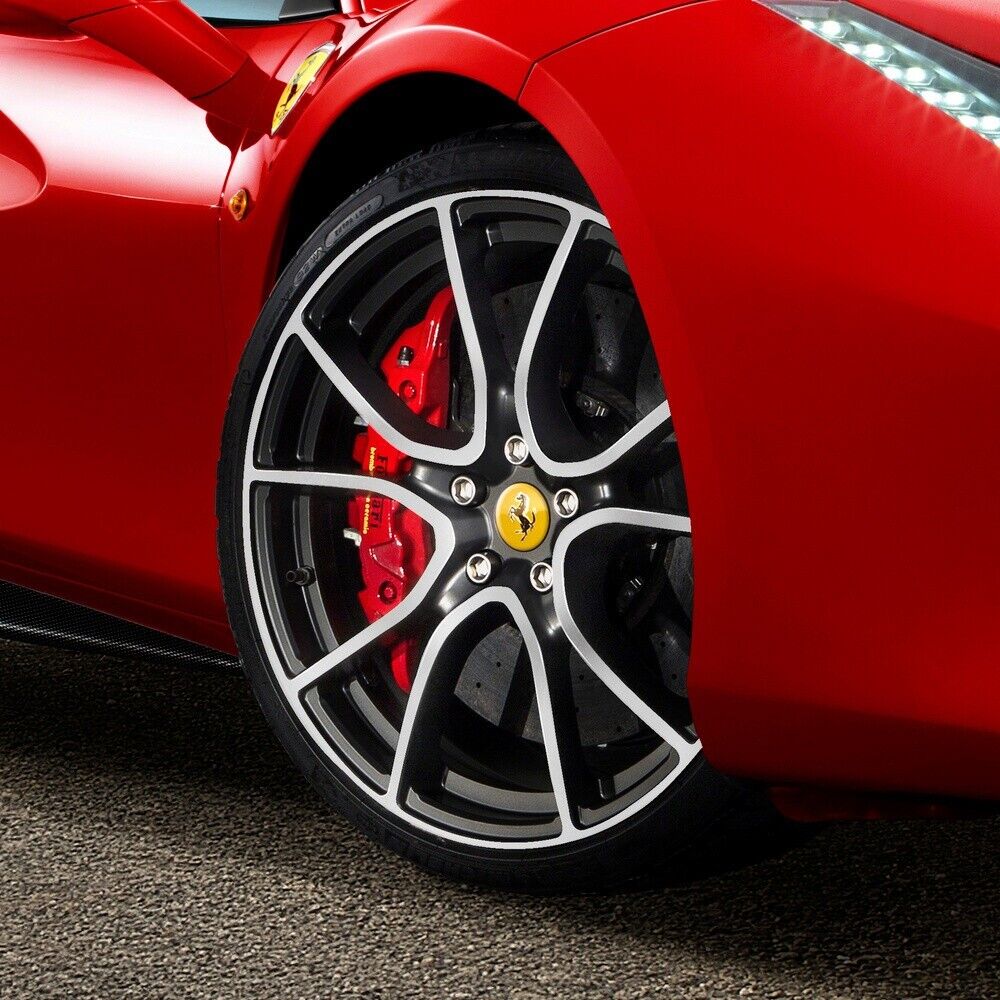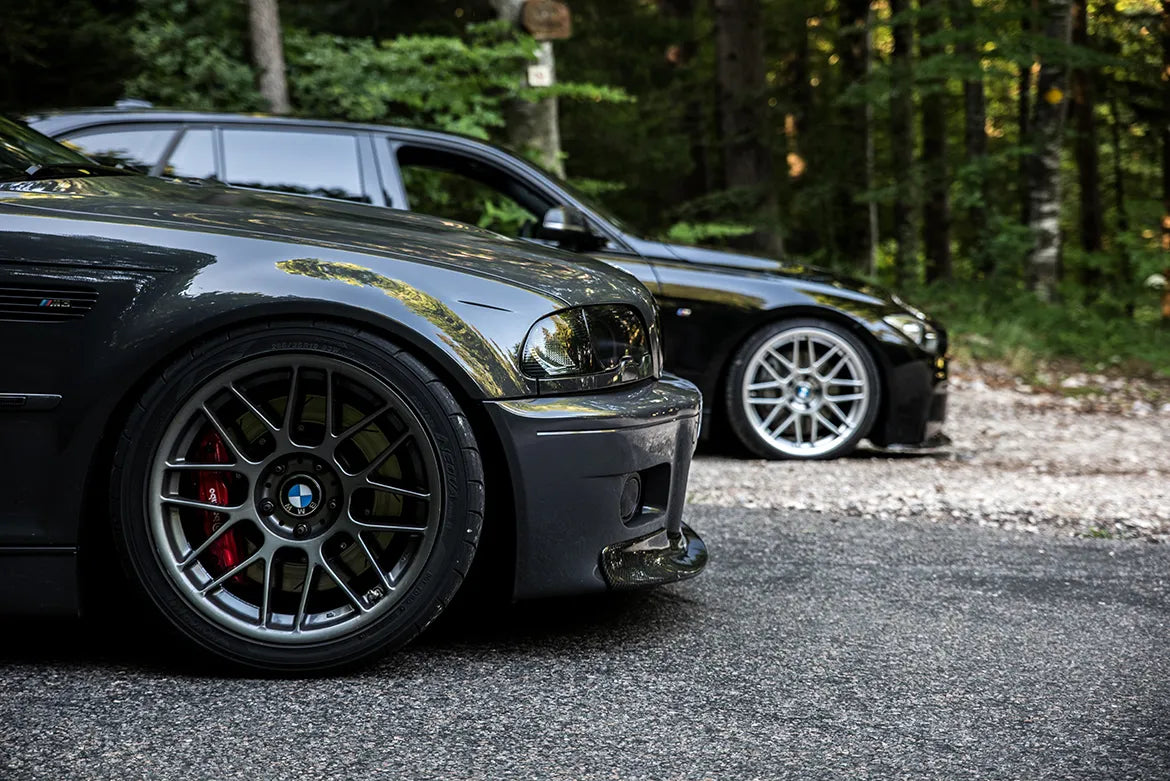
Hubcentric wheel spacers explained (benefits & safety)
Share
Hubcentric Car Wheel Spacers
You've probably seen cars with wheels that sit flush with the arches and wondered how they achieved that perfect stance. The answer often lies in hubcentric wheel spacers explained properly - a modification that's both functional and aesthetic when done right.
Many UK drivers search for information about wheel spacers because of safety and legality concerns. That's smart thinking. The automotive modification world is full of cheap imports and dodgy advice that can put you and other road users at risk.
This post will cover the real benefits of quality hubcentric spacers, address safety concerns with engineering facts, and clear up common misconceptions that keep drivers from making informed decisions.
****************************************************************************************************
Looking for Hubcentric Wheel Spacers?
Browse our UK-made CNC spacers, machined in Britain from aerospace aluminium.
👉 Shop the full range here.
****************************************************************************************************
What Are Hubcentric Wheel Spacers?

Hubcentric wheel spacers are precision-machined components that sit between your wheel and hub. They feature a centre bore that matches your car's hub diameter exactly.
This differs completely from lug-centric spacers (also called generic or universal spacers). These cheaper alternatives rely only on the wheel bolts to centre the wheel, which creates several problems we'll discuss later.
The hubcentric design matters because it maintains the original load distribution system your car manufacturer designed. The hub carries the vehicle's weight, while the bolts simply clamp everything together. This is how your car works from the factory, and quality spacers maintain this principle.
Benefits of Hubcentric Wheel Spacers

Improved Fitment
First, hubcentric spacers eliminate vibration and wheel wobble. Because the spacer centres on the hub just like your original wheel, there's no chance of the wheel sitting off-axis. This means smooth running at all speeds.
Safer Load Distribution
The spacer transfers the vehicle's weight through the hub, not the bolts. This matches the original engineering design and prevents stress concentration on the bolt threads. Your wheel bolts were never designed to carry the car's weight - they're just clamps.
Better Handling
A wider track improves cornering stability. Physics doesn't lie here - a wider wheelbase gives you better grip and reduces body roll in corners. Many performance cars come with wider tracks from the factory for exactly this reason.
Common PCD Sizes and Thickness Options for Hubcentric Wheel Spacers
When choosing hubcentric wheel spacers, matching your vehicle’s PCD (Pitch Circle Diameter) and thickness is critical for safety and performance. Here are the most common fitments in the UK:
- 5×100 hubcentric wheel spacers → Common on smaller Japanese cars (Toyota, Subaru). Best in 5–15mm thickness for subtle stance changes.
- 5×112 hubcentric wheel spacers → Found on Audi, Mercedes, VW. Popular in 10–20mm thickness for aggressive stance and brake clearance.
- 5×120 hubcentric wheel spacers → Standard for BMW and Land Rover. Best-sellers in 15–20mm thickness to correct offset and improve handling.
- 5×130 hubcentric wheel spacers → Used on Porsche models. Typically 15–25mm thickness, ideal for performance upgrades and wide tyre setups.
Brake and Wheel Clearance
Spacers create room for larger brake calipers or aftermarket wheels that might otherwise catch on suspension components. If you've upgraded your brakes or bought wheels with insufficient clearance, spacers can solve fitment issues without compromising safety.
Offset Correction

Aftermarket wheels often have different offsets than original equipment. Spacers let you correct the stance and achieve proper fitment without buying different wheels. This is especially useful if you've found the perfect wheels but they sit too far inboard.
Aesthetics
Let's be honest - wheels that sit flush with the arches look better. A more aggressive stance improves the visual appeal of almost any car. Function and form work together here.
Are Hubcentric Wheel Spacers Safe?

From an engineering perspective, properly designed hubcentric spacers are as safe as original equipment fitment. The key phrase here is "properly designed."
Several factors determine safety:
Correct specifications matter most. The spacer must match your car's PCD (bolt pattern), centre bore, and hub lip height exactly. Get any of these wrong and you're creating a dangerous situation.
Quality materials make the difference between safe and unsafe. We use 6082-T6 aluminium, which has excellent strength-to-weight ratio and corrosion resistance. Cheap spacers often use inferior materials that can fail under load.
Precision CNC machining creates the accuracy needed for safe fitment. Hand-cast or poorly machined spacers introduce tolerances that compromise safety.
Correct bolt length and torque complete the installation. You need extended bolts that account for the spacer thickness, and they must be torqued to the correct specification.
Let's address some common myths:
"Spacers stress wheel bearings" - This only happens with poorly made or incorrectly fitted spacers. Quality hubcentric spacers distribute loads exactly like the original wheel mounting system.
"Spacers are illegal in the UK" - False. Spacers are legal as long as the wheels don't extend past the vehicle arches. This is an MOT requirement, not a blanket ban on spacers.
Hubcentric vs Non-Hubcentric Spacers

Non-hubcentric spacers create several problems because they rely only on the wheel bolts for centering. This leads to higher chances of vibration, uneven bolt stress, and potential bolt shearing under extreme conditions.
The risk of off-axis wheel mounting increases dramatically with lug-centric designs. Even small variations in bolt hole positioning can create runout that causes vibration and premature wear.
Hubcentric spacers maintain OEM-like safety standards because they work exactly like the original wheel mounting system. This is why Brightstone Engineering only manufactures hubcentric spacers - we won't compromise on safety for cost savings.
Legal and Insurance Considerations in the UK
UK MOT rules are straightforward: wheels must not protrude beyond the vehicle arches. This applies whether you're running spacers or not. Many cars fail MOT because aftermarket wheels stick out too far, not because they have spacers fitted.
Insurance companies require you to declare spacers as a modification. This is usually simple and inexpensive - the cost increase is often minimal because hubcentric spacers are considered a low-risk modification when fitted properly.
The hubcentric design actually helps prove you've made a "safe, engineered modification" rather than a cheap aftermarket addition. Insurance companies appreciate this attention to safety.
Installation and Maintenance Tips

Proper installation starts with cleaning. Always clean the hub face thoroughly before fitting spacers. Dirt, rust, or paint can prevent proper seating and create dangerous runout.
Use the correct extended bolts. The length should equal your original bolt length plus the spacer thickness. Never reuse bolts that are too short - they won't engage enough thread to be safe.
Torque bolts in a star pattern to the manufacturer's specification. This distributes clamping force evenly and prevents warping. Most cars require between 80-120 Nm, but check your handbook.
Retorque after 50 miles. New installations can settle slightly, so a recheck prevents loosening. This is standard practice for any wheel installation.
Regular maintenance becomes more important, especially during winter. Road salt can cause corrosion between the spacer and hub, making removal difficult. Annual checks prevent seizure and maintain safety.
Why Choose UK-Made Hubcentric Spacers?

Quality control standards in UK manufacturing exceed most import alternatives. We machine spacers to aircraft industry tolerances, not automotive aftermarket standards.
Materials matter significantly. Our 6082-T6 aluminium offers superior strength and corrosion resistance compared to cheaper alternatives. This grade is used in motorsport applications where failure isn't an option.
CNC accuracy means exact bore sizes and lip heights every time. Hand-cast or pressed spacers introduce variations that compromise fitment and safety.
We supply correct bolts with every set, eliminating guesswork about length and grade. Many imported spacers require separate bolt purchases, often with inadequate guidance about specifications.
Local support and warranty provide peace of mind. If you have questions or problems, you're dealing with engineers who understand both the product and UK regulations.
Conclusion

Hubcentric wheel spacers explained properly show they're a safe, functional, and aesthetic upgrade when manufactured and fitted correctly. The key takeaway is simple: quality components plus correct fitment equal no safety issues.
Don't let internet myths or cheap alternatives put you off a modification that can improve both the look and handling of your car. The engineering is sound, the legality is clear, and the benefits are real.
Ready to explore quality hubcentric wheel spacers for your car? Brightstone Engineering manufactures precision hubcentric spacers right here in the UK, complete with correct bolts and full technical support. Visit our website to find the perfect fit for your vehicle.






